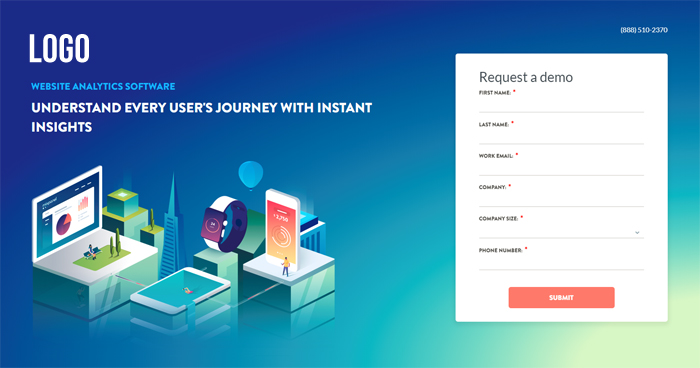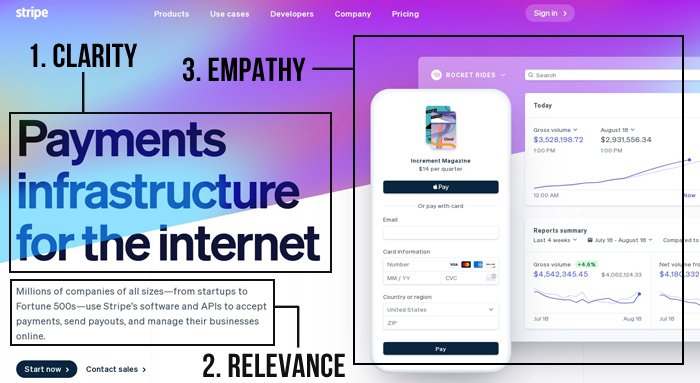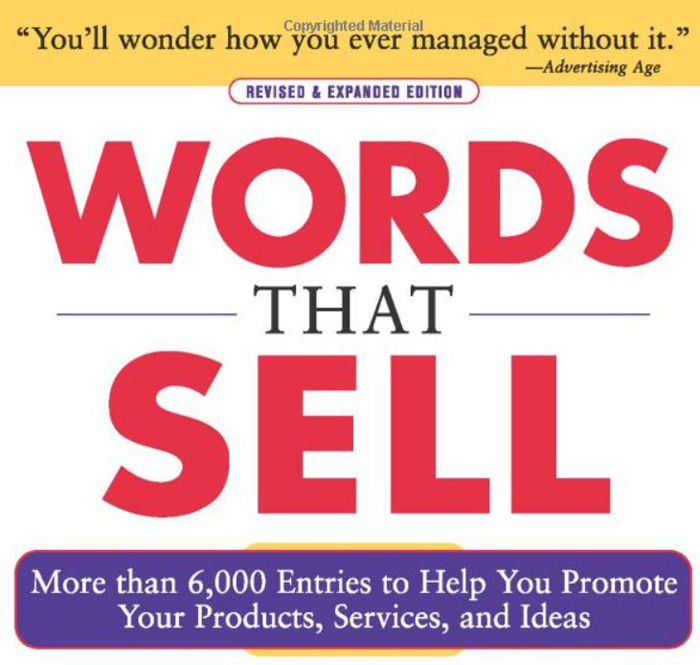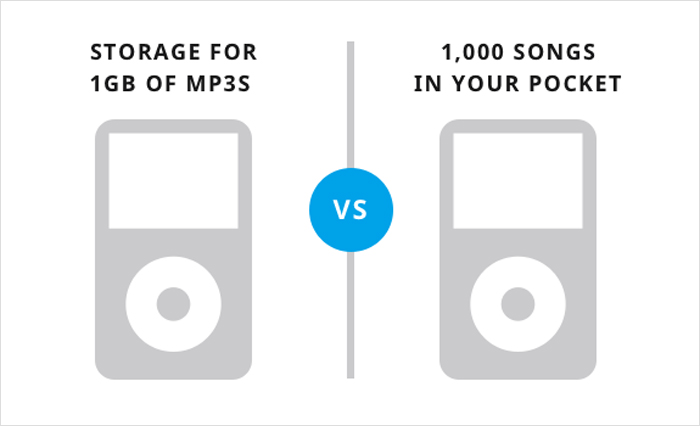

In the world of pay-per-click (PPC) advertising and sales, it’s easy to get so caught up in the top of the funnel that you totally forget the bottom of the funnel and everything that happens in the “post-click” environment.
As important as pre-click elements are – including ad optimization and audience targeting /target audience– the reality is that you can’t complete the conversion without a compelling landing page. And one of the most significant elements of a great landing page is the effective landing page headlines.
Table of Contents
Toggle
Every landing pages has a number of vital elements that are integral to creating a meaningful onsite experience and ultimately driving conversions. They include:
But all of these important factors are a waste if you don’t get the headline right.
The PPC landing page headline is the very first thing a visitor sees after clicking the PPC ad and landing on the page. If it’s irrelevant, inaccurate, vague, or boring, you have almost no chance of converting.
Outside of page loading speed, the headline is arguably the first decision point for a visitor. It gives a reason to either stick around and learn more, or bolt for something else.
Headlines, regardless of whether it’s a landing pages or newspaper, have always been treated like gold by copywriters and marketers. David Ogilvy, who is known as one of history’s greatest copywriters, was adamant that headlines are to be given the focus they deserve.
On the average, five times as many people read the headline as read the body copy. When you have written your headline, you have spent eighty cents out of your dollar
he once said.
And while most marketers and copywriters think about headlines after everything else has been created, Ogilvy and other industry legends have always been adamant that the headline commands more attention.
Ogilvy had an unofficial principle that he called the 50/50 Rule. This rule states that you should spend at least half of your time and effort developing and iterating the headline. In other words, if it takes you two hours to write copy for the rest of the page, you should spend one hour brainstorming and optimizing the headline.
While Ogilvy created this rule with ad copywriting in mind, it’s still a valuable rule of thumb for landing pages/landing page headline. And with all of the advanced split testing that we can do with same landing pages, the value of spending more time with headlines is clear. The more headlines you can drum up, the more likely it is that you’ll laser in on the recipe that works for your target audience.
Headline writing is a mixture of art, logic, psychology, and persistence. It takes time and experimentation to land on the right “formula.” And while experience is the ultimate weapon in this war, here are some tips and tricks you can use to shorten the learning curve and get better results in less time:

There are three main characteristics that every headline should always possess:
Think of your headline like a three-legged stool. If it’s missing any one of these elements, the stool loses its stability and topples over. You might be able to prop it up, but you won’t be able to sit on it.
As you craft your headlines, keep these three characteristics at the core. It’ll serve you well as you learn to develop high-converting landing pages.
The headline is important, but do you know what the goal of the headline is? (Hint: It’s not to generate a conversion or produce a sale.)
The only objective of the headline is to get a visitor to read the subheading. And then the main objective of the subheading is to get the visitor to read the next line of copy, and so on.
Don’t feel the weight of trying to convert someone in 10 words or less – there’s ample room to do this below the fold. Your goal is to reaffirm their decision to click on the ad and give them a reason to keep reading. If you can do that, it’s a win.

It’s difficult to hit on everything you want to cover in one headline. Thankfully, you also have the option of creating a subheader (which is basically just a smaller heading that goes directly beneath the heading).
The subheading can be a bit longer and include more characters. It’s used to clarify, restate, or expound upon what was stated in the headline. In many cases, it lists off additional benefits and, as previously stated, serves the purpose of pushing a visitor’s eyes further down the landing page.
Specificity converts and generalities tank.
If you want to generate better results with your headlines and drive higher conversion rates for your landing page, it starts with being very clear. You might push some people away, but your clarity will bring the right people into the fold.
Think in terms of specific claims and clarifying language. If you’re selling consulting services, don’t talk in terms of serving “business owners” or “entrepreneurs.” Get super specific about the types of business owners and entrepreneurs you’re communicating with. Are they small local restaurant owners? Are they growing digital marketing agencies?
Don’t make vague claims about how something works. Instead, use data, statistics, or quotes from customers. Always avoid the macro language when you have the opportunity to go macro. You’ll speak to a smaller group, but that group will be so much more invested in what you have to say.
Length is another important element in headline writing. You want the headline to be short enough for a visitor to focus and long enough to include everything that needs to be mentioned. Where does the sweet spot lie?
According to one study, the human brain only has a certain capacity to process information. And if you want to grab peak focus and engagement, seven words is the bullseye. However, anything within the five to nine range generally performs quite well.
Don’t get too caught up on making headlines five to seven words in length, but avoid extremes. Anything super short – like one to three words – probably isn’t enough. Likewise, anything that’s 15 to 20 words is going to miss the mark.
The worst mistake – and one that’s unfortunately quite common – is to focus the headline on your brand or product. (Intuitively, this seems like the very thing you should be doing. But realistically, it’s a huge misstep that’s difficult to recover from.)
When you write a headline that’s brand-focused, you’re basically making yourself the focal point. You’re like the kid who stands on the table at a high school party and screams, “Look at me!” People might look, but they’re rolling their eyes.
Headlines should always, always, always be focused on your target customer. Your product might solve their problems, but leave the product out of it. Focus on benefits instead of solutions.
The best brands don’t try to position themselves as the hero. Instead, they position the customer as a hero and offer to be a guide who points them to a solution that makes their problem go away and/or fulfills their underlying desire. (This solution just so happens to be the product.)

Listicles have emerged as a favorite style of copywriting in recent years. And though they can feel generic and repetitive, the truth is that they work. And the reason why is tied to the specificity of numbers.
Numbers are psychologically proven to generate a response in the brain. When the brain sees a digit amongst a sea of words, it has no choice but to slow down and process the number. It also establishes parameters and allows for easy classification. If you’re giving someone the “5 Reason Eating Red Meat is Good for Your Health,” it tells people exactly what to expect. They don’t have to go searching for the takeaways. They know there will be five – end of story.
Numbers are especially powerful when attached to a data point. Statistics and percentages are powerful on many levels – use them to your advantage.

Generic and boring words won’t get you very far. Your headline is the curb appeal. If it doesn’t pull people in on an emotional level and communicate tangible value, people aren’t going to read on.
Creative wording doesn’t mean lying or embellishing. It doesn’t mean being flowery and over-the-top. It does, however, require you to improve your word choice.
Don’t have the deepest vocabulary? Use an online thesaurus or a book like Words That Sell to get ideas for more impactful language. Sometimes upgrading a single word can make a major difference in the perception of your landing page headline.
The headline is so important that you should dedicate a specific amount of time to brainstorming options and creating different options. (As Ogilvy’s rule states, you should spend at least half the amount of time it takes you to write the accompanying copy on the headline.) However, don’t get so lost in headline writing that you forget about the rest of the PPC landing page.
A headline is only effective if it has proper alignment with the body copy. Never mislead a visitor or make someone search for relevance. The headline can evoke curiosity and intrigue, but it can’t deliberately lead someone astray. You might get people to spend time on the landing page, but they won’t convert.
Word choice, sentence structure, and grammar are only part of what it takes to write a good headline. Sometimes you have to get creative with how a headline looks to the eye. And whether you realize it or not, you have a number of powerful tools you can leverage to analyze competitors and get results. They include:
As you can see, there are countless ways to improve a Search engines headline without even changing a word of copy. Success is in the details!

Everyone wants to be original and flex their own creative muscles, but when it comes to writing headlines, your decision to leave the herd may actually hurt your ability to convert. This is one area of life where following the pack and mimicking what’s already been done helps.
According to one study, 200 of the best ads that produced significant sales and gained global recognition across a wide swath of industries were actually very similar to one another. In fact, 89 percent of these Google ads could be classified into one of six headline formulas.
It’s rare that you need to reinvent the wheel – simply installing the wheel correctly is enough to get you to where you need to be. Become a student of the game and build up your own library of effective formulas and examples to pull from. Never copy, but always mirror.
Now that we’ve thoroughly dissected some elements and tips for crafting superior landing page headlines, let’s take a look at a few copy-and-paste formulas and high-converting examples that you can use to improve your results.
Feel free to add these formulas to your own personal swipe file and/or experiment with a few of them on your next landing page project. As always, you’ll want to tweak and test until you find the best fit for your landing page.
Did you know that less than 25 percent of PPC ads produce any conversions? Yes, that’s right…more than 75 out of 100 PPC ad campaigns are able to convert clicks into customers. This means the majority of ad campaigns are a waste of time and money or your PPC agency is simply doing it wrong.
When your ad campaigns don’t work, it’s easy to blame the medium and assume that PPC ads or effective PPC landing page headlines don’t work. But if we’re being frank, it’s not that PPC doesn’t work – it’s that most agencies are doing it wrong.
At PPC.co, we work with small businesses and enterprise companies on a daily basis. And because we have such a large sample size and experienced track record working with a variety of brands in all industries, niches, and stages of growth, we know that PPC landing pages advertising works. We’ve also discovered that so much of the results depend on the post-click experience.
Want to learn more about how you can develop winning ad campaigns that meld compelling pre- and post-click experiences to generate results for your business? We’d love to fix your broken ad spend and help you boost the bottom line.
Contact PPC.co today and get a no-strings-attached audit and proposal for your next campaign! We have great incentives for those just starting out in PPC that may need some white label assistance!
Please fill the below form to download the PDF
“*” indicates required fields.
Please fill the below form to download the PDF
“*” indicates required fields.
Please fill the below form to download the PDF
“*” indicates required fields.
Please fill the below form to download the PDF
“*” indicates required fields.
Please fill the below form to download the PDF
“*” indicates required fields.
Please fill the below form to download the PDF
“*” indicates required fields.